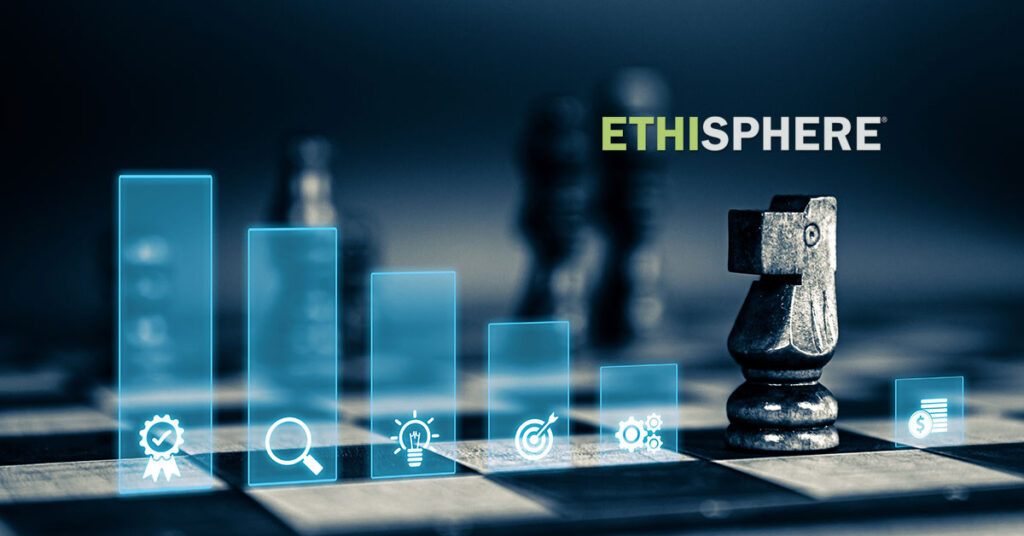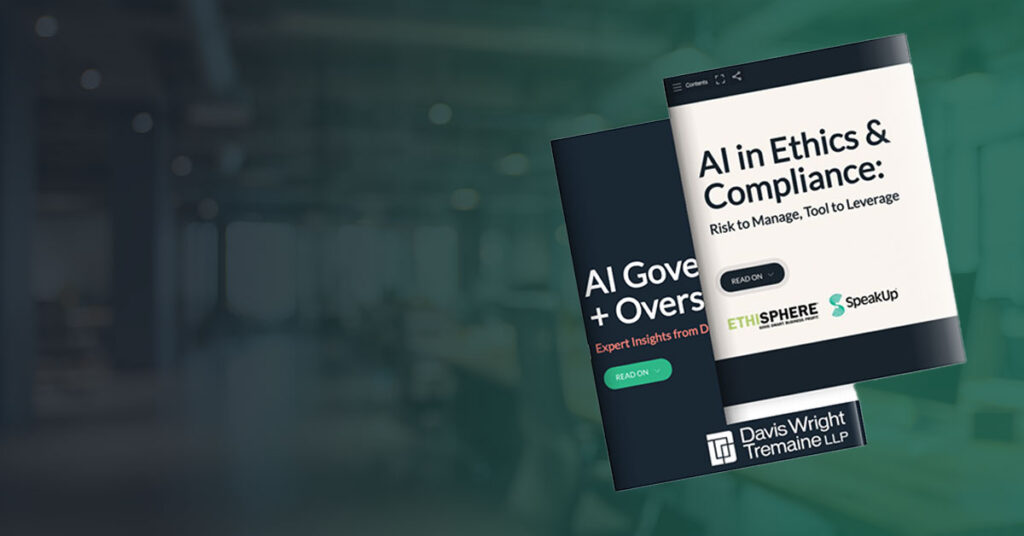by Emily Miner
How forward-thinking programs are reducing risk, enhancing culture, and delivering measurable business value.
Despite the persistent pressure for companies to “do more with less,” especially amid economic headwinds, ethics and compliance programs are proving to be crucial business partners. As geopolitical tensions, trade escalations, and global market uncertainty drive organizations to scrutinize budgets and restructure operations, some may be tempted to view compliance programs as cost centers.
But that’s not the full story.
Through our work with hundreds of E&C leaders over the past year—and as reflected in Ethisphere’s newly released 2025 Ethics & Compliance Program Trends & Employee Perceptions Report—we see a compelling shift: organizations are increasingly leaning on their ethics and compliance functions not only to manage risk, but to shape culture, protect intangible assets, and even fuel performance.
Ethics and Compliance: The Stabilizing Force in a Shifting Regulatory Environment
In times of uncertainty, ethical leadership becomes more than a corporate value—it’s a strategic imperative. Global regulatory changes have created a fragmented, fast-evolving environment that demands agility, strong internal controls, and a principles-based orientation. While U.S. enforcement of the Foreign Corrupt Practices Act (FCPA) has recently pulled back, the UK, France, and Switzerland announced a new international anti-corruption prosecutorial taskforce and California published a legal alert reminding businesses that FCPA violations are actionable under the state’s Unfair Competition Law. Meanwhile, data privacy regulations continue to evolve rapidly, ranging from the EU’s GDPR to a patchwork of U.S. state laws to regulations across Asia and Australia.
This shifting state and international regulatory momentum creates added complexity for global businesses, especially those managing operations in multiple jurisdictions. And it is in this environment where modern E&C programs shine. Those built on principles-based frameworks (rather than reactive, rule-bound checklists) have the flexibility to guide their organizations through ambiguity, embed compliance into daily decision-making, and stay ahead of legal risk.
The 2025 report shows that leading programs are going beyond compliance checkboxes. They enable ethical decision-making at scale and empower their organizations to act with integrity in the face of uncertainty.
Technology, AI, and the Rise of Intelligence-Driven Compliance
Forward-looking ethics and compliance teams also embrace emerging technologies to scale their impact. For example, some companies are deploying internal generative AI tools trained on their own policies and procedures. These AI solutions provide real-time guidance to employees in natural, conversational language, making it easier for employees to get clarity before making decisions.
Additionally, dynamic risk dashboards are helping E&C teams proactively identify red flags and manage third-party risk. By aggregating data from across the organization, including HR platforms, procurement, expense data, disclosure programs, reporting and investigation statistics, and external risk databases, these dashboards offer a comprehensive view that informs internal audit plans and drives continuous improvement.
These innovations are not just “nice to have”, they’re becoming necessary tools in an increasingly complex risk environment.
Quantifying the ROI: The Ethics Premium and Cultural Impact
Ethisphere’s ongoing research continues to reinforce the connection between ethical leadership and business performance. The 2025 Ethics Premium—the margin by which publicly traded honorees of the World’s Most Ethical Companies designation outperformed a comparable global index over the previous five years—is nearly 8%. This premium represents more than reputational value: it points to the bottom-line impact of building a culture rooted in ethics, transparency, and accountability.
Culture matters, and data supports it. In a recent study by Arizona State University, organizations that scored one standard deviation above the benchmark on Ethisphere’s Culture Quotient questionnaire realized nearly 40% higher return on assets, a 2.25-point advantage.
In other words, stronger ethical cultures produce better business outcomes.
These links are especially important as intangible assets like intellectual property, brand equity, and human capital, now make up the majority of enterprise value. According to Brand Finance, intangible assets reached an all-time high in 2024, making them more vulnerable to misconduct, reputational damage, and regulatory scrutiny. Ethics and compliance programs play a vital role in protecting these assets and promoting sustainable value creation.
Ethical Culture Starts with Leadership—and Data
One of the most powerful tools E&C leaders have at their disposal is data. When it comes to driving culture, perception data can be as important as performance metrics. The 2025 E&C Program Trends & Employee Perceptions Report includes not only insights into how programs are evolving but also how employees experience them.
A key takeaway: people matter.
Ethisphere’s latest Culture Report revealed that 60% of employees who raise concerns prefer to report to their direct managers. That’s why more than 90% of this year’s World’s Most Ethical Companies provide dedicated training for people managers, focused on their unique role in fostering a culture of integrity and psychological safety.
Managers are not just policy enforcers, they are culture carriers. Equipping them with the right tools, messaging, and support can be the difference between surfacing issues early and missing a critical signal.
A Growing Appetite to Speak Up
Another sign of cultural health is the increasing number of people willing to raise their hands. According to the SEC Office of the Whistleblower, in fiscal year 2024, the SEC received approximately 24,980 whistleblower tips, surpassing 2023 record of 18,354. However, it’s noteworthy that over 14,000 of these tips were submitted by just two individuals. When adjusting for these anomalous submissions, the volume of whistleblower tips has remained relatively consistent over the past few years.
But these consistent volumes in recent years underscores both increased awareness and growing trust in reporting mechanisms. But internal reporting channels must keep pace. The best E&C programs build robust, confidential, and accessible reporting avenues—and just as importantly, they foster transparency in how investigations are conducted and resolved. This builds credibility and reinforces an organization’s commitment to non-retaliation.
A healthy speak-up culture is both a risk mitigator and a trust builder. It is one of the clearest indicators of an ethical organization.
The Cost of Non-Compliance
The flip side of the ROI equation is the cost of failing to act. Compliance scandals continue to serve as cautionary tales—demonstrating that ethical breaches are rarely the result of a lone “bad actor.” Rather, research suggests that around 70% of misconduct stems from cultural factors, social influence, and unclear expectations.
Without strong programs to guide decisions, shape behavior, and reinforce norms, companies leave themselves vulnerable to regulatory penalties and reputational damage, investor pullback, employee attrition, and long-term loss of trust.
In today’s environment, the cost of non-compliance is simply too high.
Final Thoughts: The Imperative Is Clear
Ethics and compliance programs are no longer just safeguards, they are strategic enablers. They help organizations navigate complexity, drive performance, and foster resilient cultures. As the 2025 E&C Program Trends & Employee Perceptions Report makes clear, now is the time to invest.
For E&C professionals, the report offers fresh benchmarks, employee insights, and case studies from the world’s most ethical companies. It’s an essential resource for any organization looking to strengthen its program, demonstrate value to leadership, and future-proof its compliance strategy.






